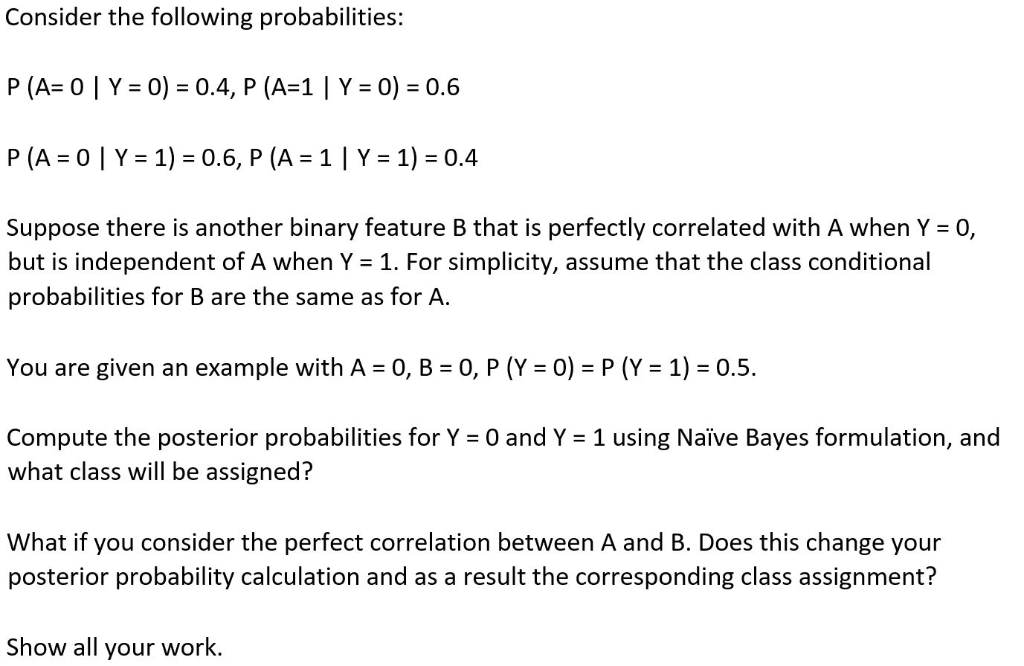Answered step by step
Verified Expert Solution
Question
1 Approved Answer
Consider the following probabilities: PA-olYs0)-04, PA-1 l Y = 0) = 0.6 P(A-OlY-1) = 0.6, P(A-11Y-1) = 0.4 Suppose there is another binary feature B

Step by Step Solution
There are 3 Steps involved in it
Step: 1

Get Instant Access to Expert-Tailored Solutions
See step-by-step solutions with expert insights and AI powered tools for academic success
Step: 2

Step: 3

Ace Your Homework with AI
Get the answers you need in no time with our AI-driven, step-by-step assistance
Get Started


